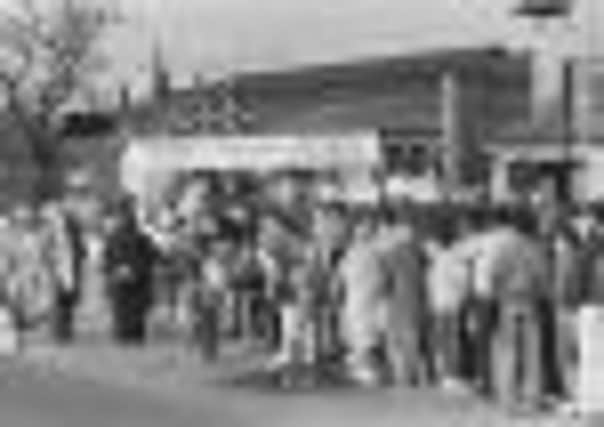Famous names and everyday lives set down in history


Henry VIII is not often praised for his forward thinking.
A man who loved to wage war almost as much as he liked to hunt, he led England into an expensive war against France and his quest for an heir cost his six wives dearly. However, amid the ransacking of monasteries and the general upheaval which trailed in Henry’s wake, his reign did include a few moments of genuine inspiration.
It was under his direction that Thomas Cromwell issued an order instructing each parish in England to keep a register detailing every baptism, marriage and burial it performed. For the first time the movements of the country’s population were logged and the documents have been a vital resource to social historians and geneaologists ever since.
Advertisement
Hide AdAdvertisement
Hide AdToday, for the first time eight million of those parish records, dating from 1538 to 1980, go online, revealing the names and stories of those who lived through the events which changed the shape of English history.
“This is one of the largest collections of its type and it contains some really fascinating documents,” says Dan Jones, international content director at the website Ancestry.co.uk, which is behind the project.
“Some of the earliest significant records date back to the English Civil War which saw many of its key battles in West Yorkshire where Lord Thomas Fairfax led the Parliamentary forces against the Royalists.
“These include the parish records of 1643 which list the thousands of soldiers who fell in the Battle of Leeds, Adwalton Moor, the Storming of Wakefield and the Battle of Seacroft Moor. It was an incredibly important chapter not just in the history of Yorkshire but in the history of the entire country.”
Advertisement
Hide AdAdvertisement
Hide AdJust two years later, tragedy struck again when the bubonic plague hit Leeds in 1645. The first cases were discovered in Vicar Lane in the heart of the city and the disease quickly spread. Within a matter of weeks, 1,325 people had died, an estimated one third of the city’s entire population.
“The burial records can make for grim reading,” says Dan. “Fast forward to 1811 and the Luddite movement, which had begun in Nottingham, was on the rise in West Yorkshire, taking hold among the working populations of Leeds, Huddersfield and Wakefield. Factory workers felt threatened by the march of technology as machinery began to replace skilled craftsmen and their fear and frustration soon turned to unrest.
“Mills were attacked or destroyed by organised gangs, which led to the British Army being mobilised to put down the most aggressive groups. Among the burial records which have just been released online are a number of men who were executed for leading Luddite forces, including John Ogden who was hung for his attack on a mill in Huddersfield in 1812 during which the mill owner was murdered.”
As well as documenting civil unrest and turbulence, the records also include some famous names, with documents relating to Charlotte Brontë, John Smeaton the 18th-century engineer known as Yorkshire’s Brunel and Harry Ramsden who opened his first fish and chip shop in 1928.
Advertisement
Hide AdAdvertisement
Hide Ad“Three years later he had opened his fish and chip palace and in 1952 the shop set a world record when it served 10,000 portions in a single day,” adds Dan. “However, as well as the heroes and the villains who made their mark both in the county and nationally, these records also detail the baptisms, marriages and burials of millions of Yorkshire men and women.
“More importantly, they may well hold the key for people trying to trace their ancestors beyond the 19th-century.”
Genealogy is a notoriously painstaking task and even with the rise of online databases many have had little option but to blow the dust off records held in local history archives. However, the release of this latest collection should give those attempting to chart their ancestors through the centuries a head start.
“The collection pre-dates civil registration, the government system set up by in 1837 to keep an accurate record of citizens’ lives,” says Dan. “Before then, the only way to trace a baptism, marriage or burial is through parish records, which simply wouldn’t have been possible had it not been for those parish scriveners who documented vital events in their towns and villages for hundreds of years.
“We all have a lot to thank them for.”
To search the online database of parish records visit www.ancestry.co.uk/yorkshire